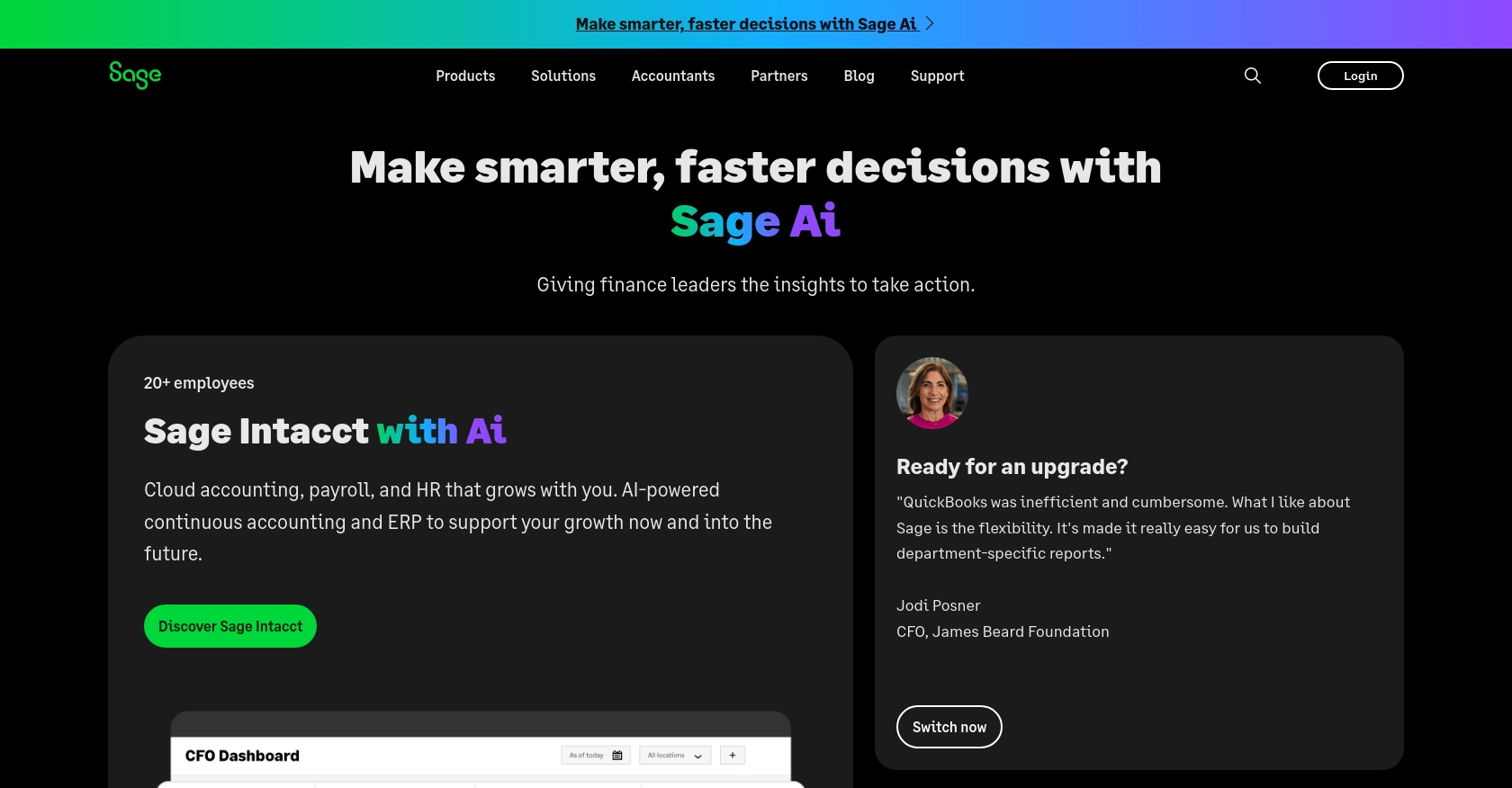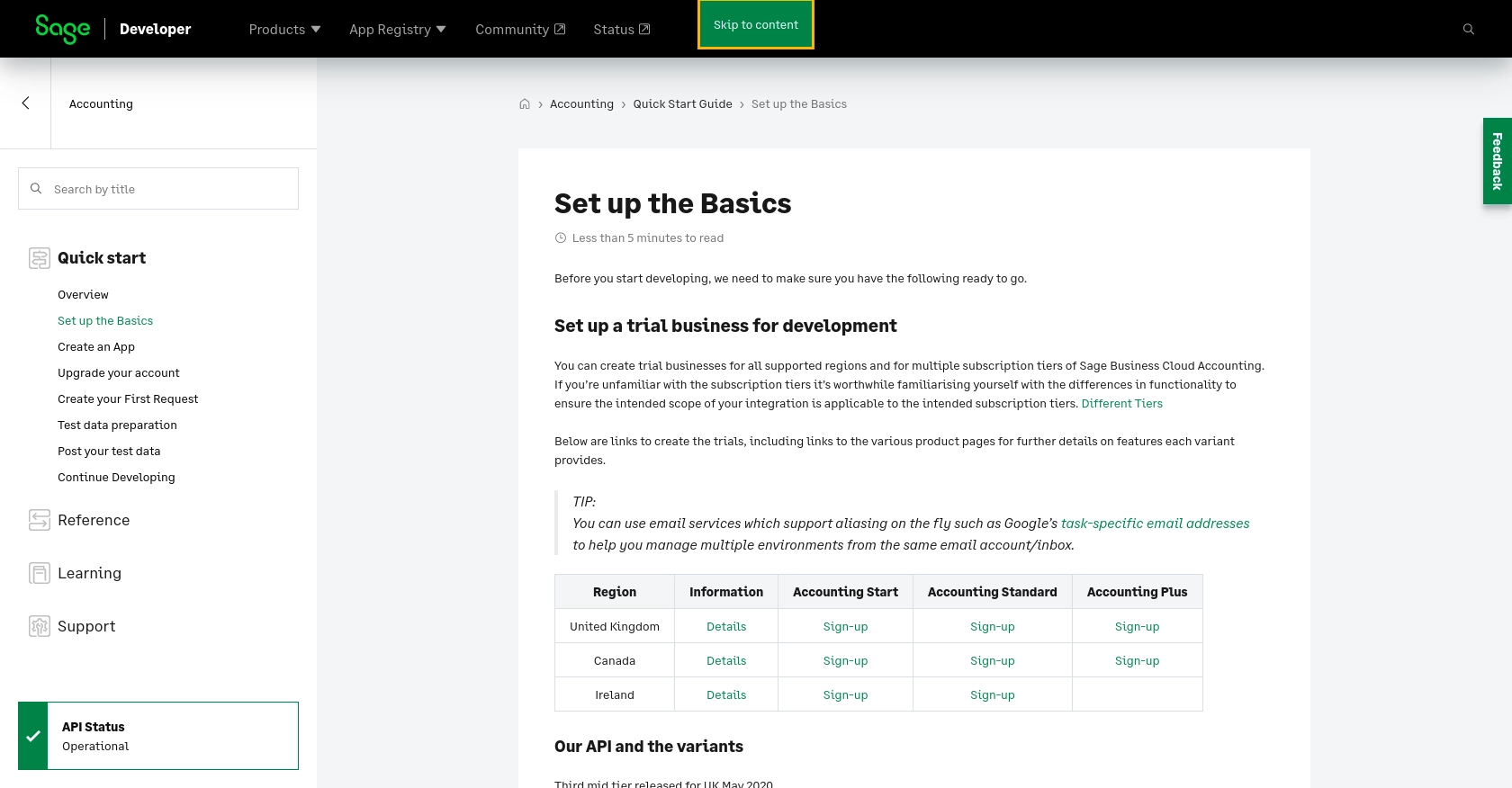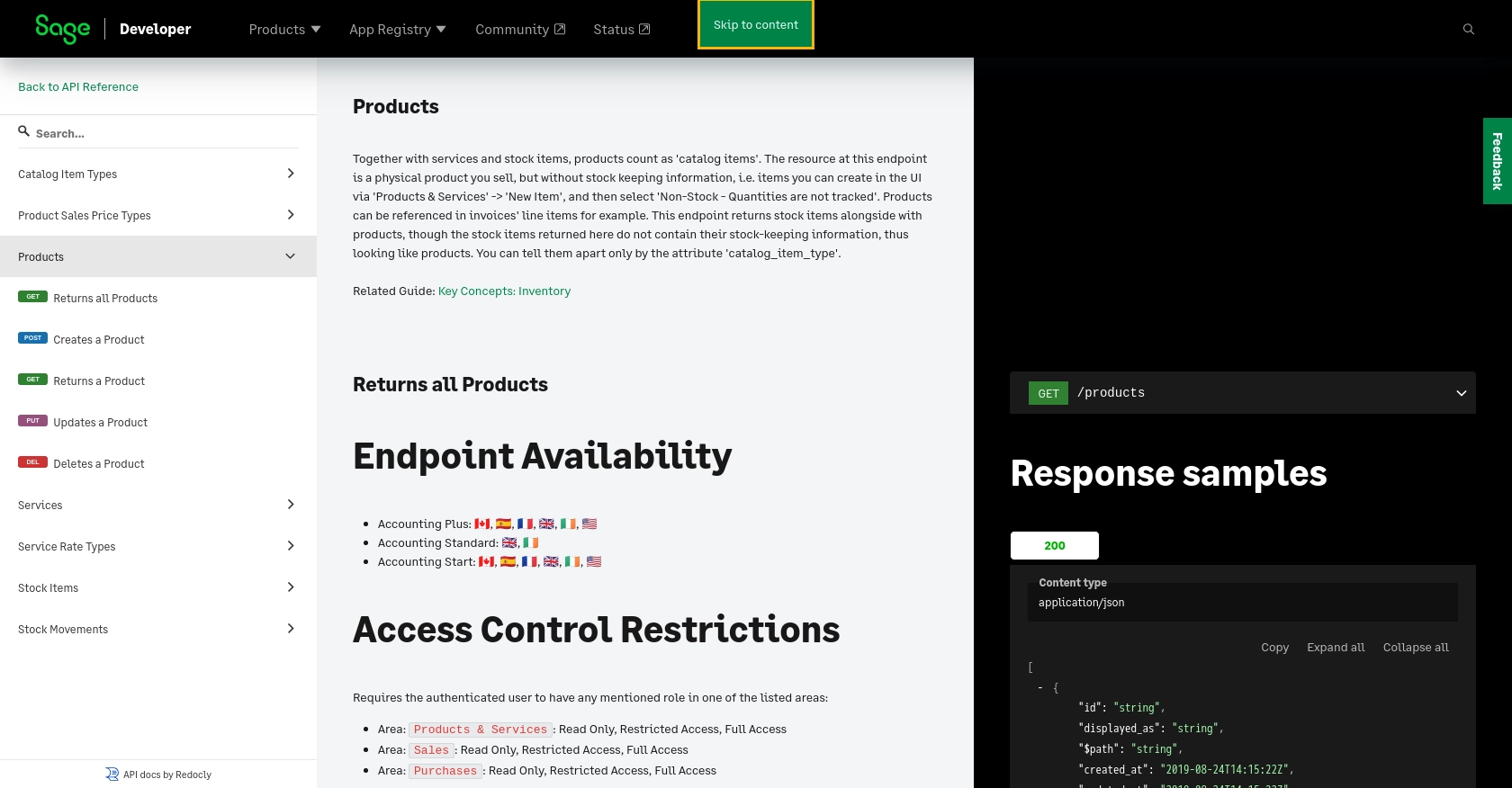Using the Sage Accounting API to Get Items (with Python examples)

Introduction to Sage Accounting API
Sage Accounting is a robust cloud-based accounting solution tailored for small to medium-sized businesses. It offers a comprehensive suite of tools to manage finances, streamline accounting processes, and ensure compliance with ease. With its user-friendly interface and powerful features, Sage Accounting has become a preferred choice for businesses aiming to enhance their financial management capabilities.
Integrating with the Sage Accounting API allows developers to automate and optimize various accounting tasks. For example, you can use the API to retrieve item data, which can be crucial for inventory management and financial reporting. By accessing item details programmatically, businesses can maintain accurate records and make informed decisions based on real-time data.
Setting Up Your Sage Accounting Test/Sandbox Account
Before diving into the integration with the Sage Accounting API, it's essential to set up a test or sandbox account. This environment allows developers to experiment with API calls without affecting live data, ensuring a safe and controlled testing space.
Step 1: Sign Up for a Sage Developer Account
To begin, you'll need a Sage Developer account. This account enables you to register and manage your applications, obtain client credentials, and configure essential settings like callback URLs.
- Visit the Sage Developer Portal.
- Sign up using your GitHub account or an email address.
- Follow the guide on creating an app to complete your registration.
Step 2: Create a Trial Business Account
Next, set up a trial business account for development purposes. Sage offers trial accounts for various regions and subscription tiers, allowing you to test different functionalities.
- Choose your region and subscription tier from the options provided on the Sage Developer Portal.
- Sign up for a trial account using the links available for each region.
Step 3: Register Your Application
With your developer account ready, the next step is to create an application within the Sage Developer Portal. This process will generate the necessary credentials for API access.
- Log in to your Sage Developer account.
- Click on "Create App" and provide a name and callback URL for your application.
- Upon saving, you'll receive a Client ID and Client Secret, which are crucial for OAuth authentication.
Step 4: Upgrade to a Developer Account
To fully utilize the Sage Accounting API, upgrade your trial account to a developer account. This upgrade provides extended access for testing your integration.
- Submit a request to upgrade your account via the Sage Developer Portal.
- Provide details such as your name, email, app name, and Client ID.
- Wait for confirmation, which typically takes 3-5 working days.
Once these steps are completed, you'll be ready to start interacting with the Sage Accounting API in a secure and isolated environment.

sbb-itb-96038d7
Making API Calls to Retrieve Items from Sage Accounting Using Python
To interact with the Sage Accounting API and retrieve item data, you'll need to set up your Python environment and make authenticated API requests. This section will guide you through the process of making these API calls effectively.
Setting Up Your Python Environment for Sage Accounting API
Before making any API calls, ensure you have Python installed on your machine. This tutorial uses Python 3.11.1. Additionally, you'll need the requests library to handle HTTP requests.
- Install Python 3.11.1 from the official Python website.
- Use the following command to install the
requestslibrary:
pip install requests
Writing Python Code to Retrieve Items from Sage Accounting
With your environment ready, you can now write the Python code to fetch items from the Sage Accounting API. Follow the steps below to create a script that retrieves item data.
import requests
# Set the API endpoint and headers
endpoint = "https://api.sage.com/accounting/v3.1/products"
headers = {
"Authorization": "Bearer Your_Access_Token",
"Content-Type": "application/json"
}
# Make a GET request to the API
response = requests.get(endpoint, headers=headers)
# Check if the request was successful
if response.status_code == 200:
items = response.json()
for item in items['data']:
print(f"Item Name: {item['name']}, Price: {item['price']}")
else:
print(f"Failed to retrieve items: {response.status_code} - {response.text}")
Replace Your_Access_Token with the access token obtained during the OAuth authentication process.
Understanding the API Response and Handling Errors
When you execute the script, it sends a GET request to the Sage Accounting API to retrieve item data. If successful, the response will contain a list of items, which you can iterate over to access individual item details.
It's crucial to handle potential errors gracefully. The script checks the response status code and prints an error message if the request fails. Refer to the Sage API documentation for more details on error codes and their meanings.
Verifying the API Call in the Sage Accounting Sandbox
After running the script, verify the retrieved data by checking the items in your Sage Accounting sandbox account. Ensure the data matches the expected output and reflects the items available in the sandbox environment.
By following these steps, you can efficiently retrieve item data from Sage Accounting using Python, enabling seamless integration and data management for your business applications.

Conclusion and Best Practices for Using Sage Accounting API with Python
Integrating with the Sage Accounting API using Python can significantly enhance your business's financial management capabilities by automating data retrieval and processing. By following the steps outlined in this guide, you can efficiently access item data and ensure seamless integration with your existing systems.
Best Practices for Secure and Efficient API Integration
- Securely Store Credentials: Always store your OAuth credentials, such as the Client ID and Client Secret, securely. Consider using environment variables or a secure vault to protect sensitive information.
- Handle Rate Limiting: Be mindful of the API's rate limits to avoid throttling. Implement retry logic with exponential backoff to manage requests efficiently.
- Standardize Data Fields: Ensure that data retrieved from the API is standardized and transformed as needed to fit your application's requirements.
- Error Handling: Implement comprehensive error handling to manage different response codes and provide meaningful feedback to users.
Enhancing Integration Capabilities with Endgrate
While integrating with Sage Accounting API can be straightforward, managing multiple integrations across different platforms can become complex. Endgrate simplifies this process by providing a unified API endpoint that connects to various platforms, including Sage Accounting.
By leveraging Endgrate, you can save time and resources, allowing your team to focus on core product development while ensuring a seamless integration experience for your customers. Explore how Endgrate can streamline your integration efforts by visiting Endgrate's website.
Read More
- https://endgrate.com/provider/sage
- https://developer.sage.com/accounting/quick-start/set-up-the-basics/
- https://developer.sage.com/accounting/quick-start/create-an-app/
- https://developer.sage.com/accounting/quick-start/upgrade-your-account/
- https://developer.sage.com/accounting/reference/products-services/#tag/Products
Ready to get started?
